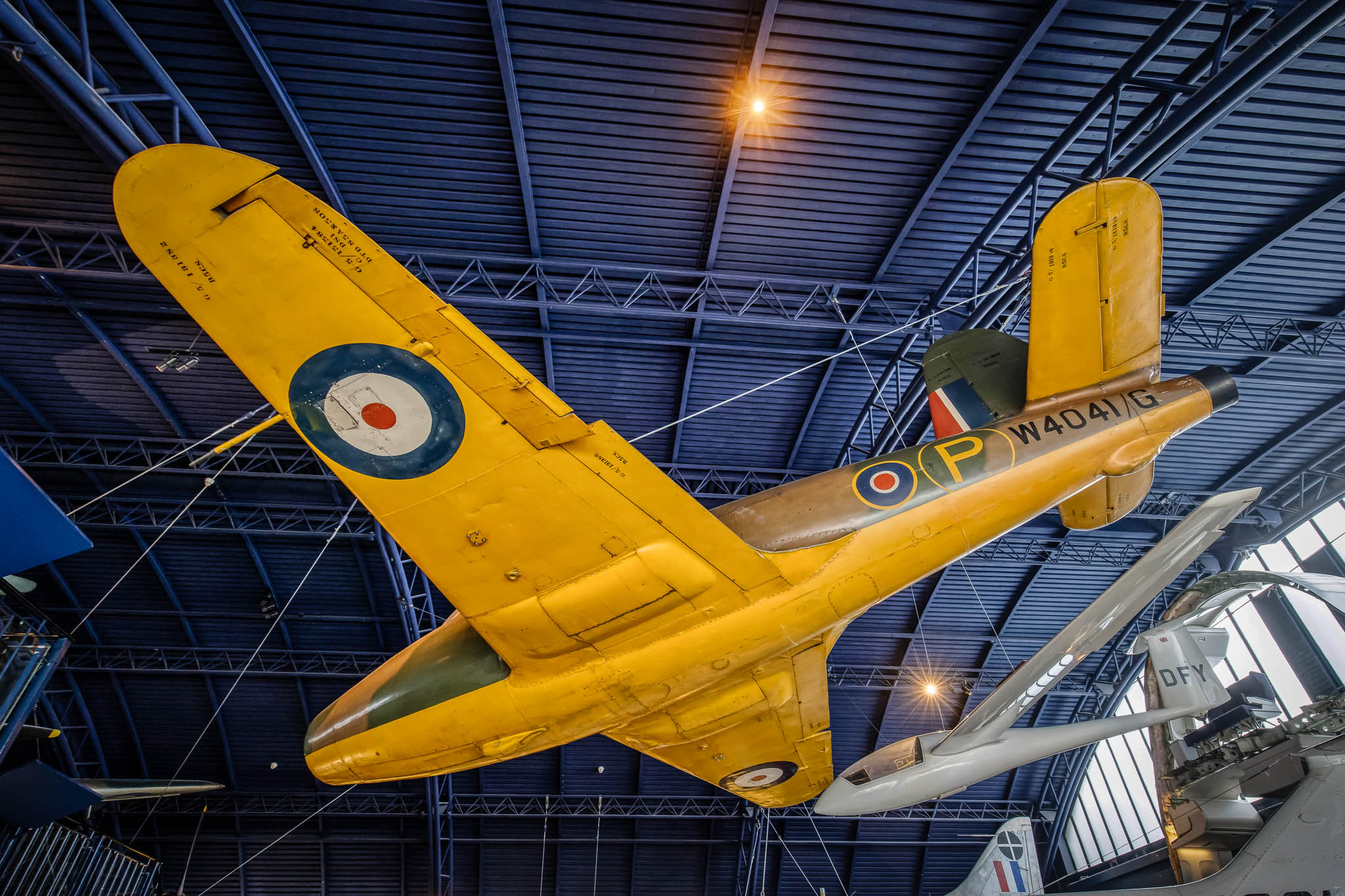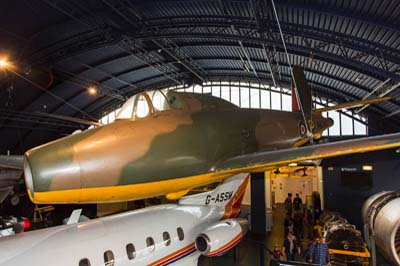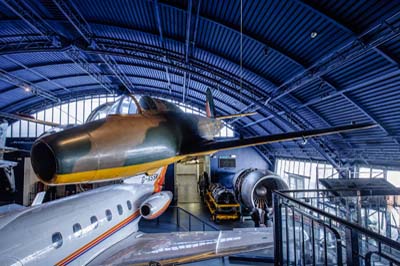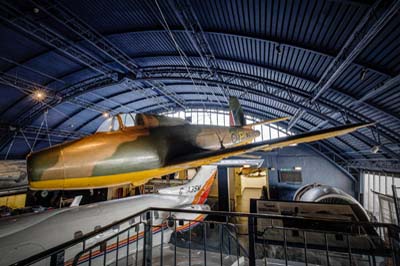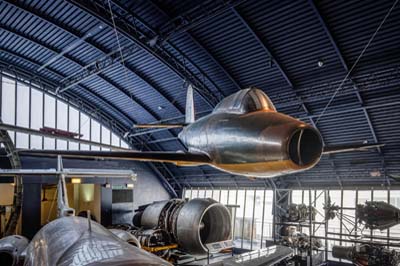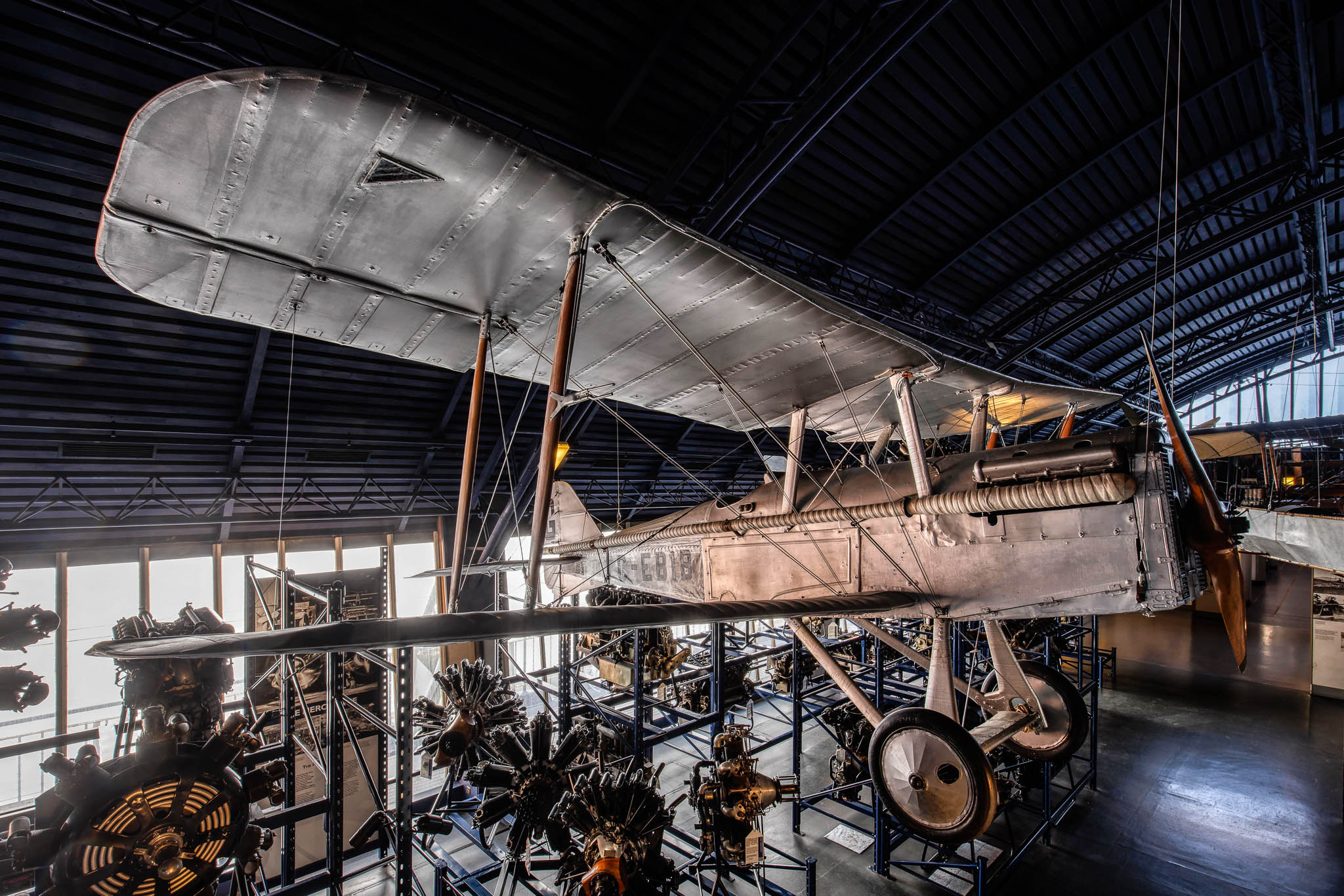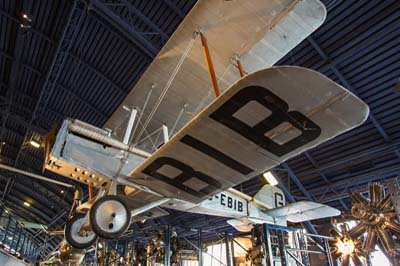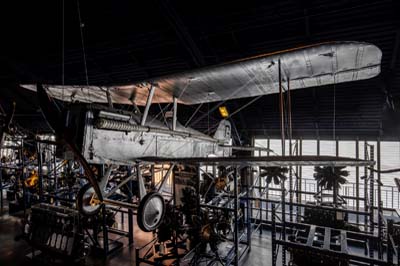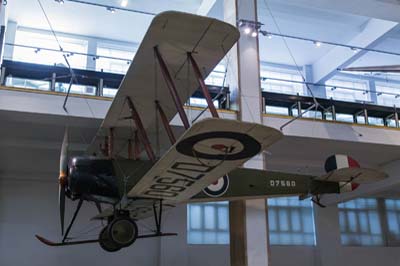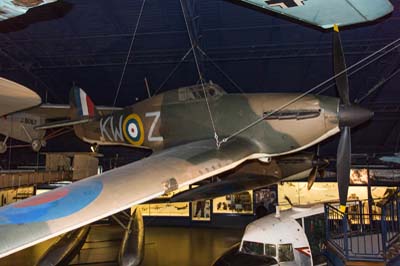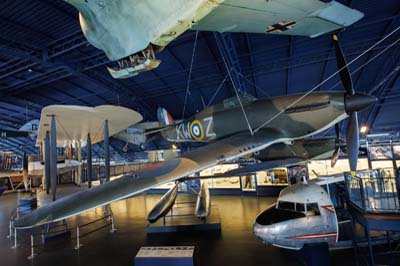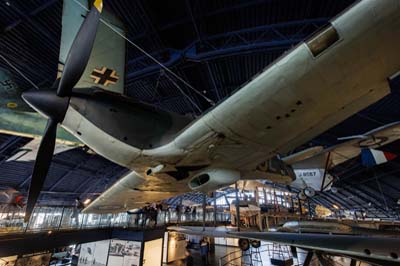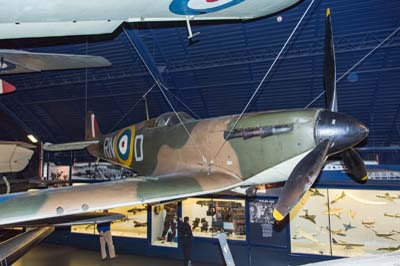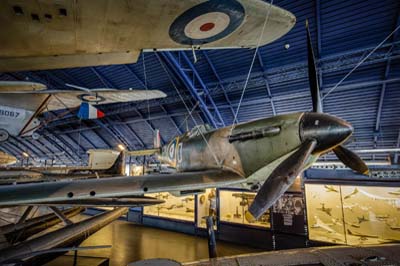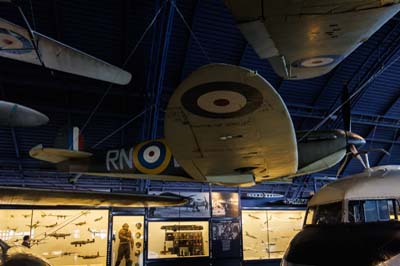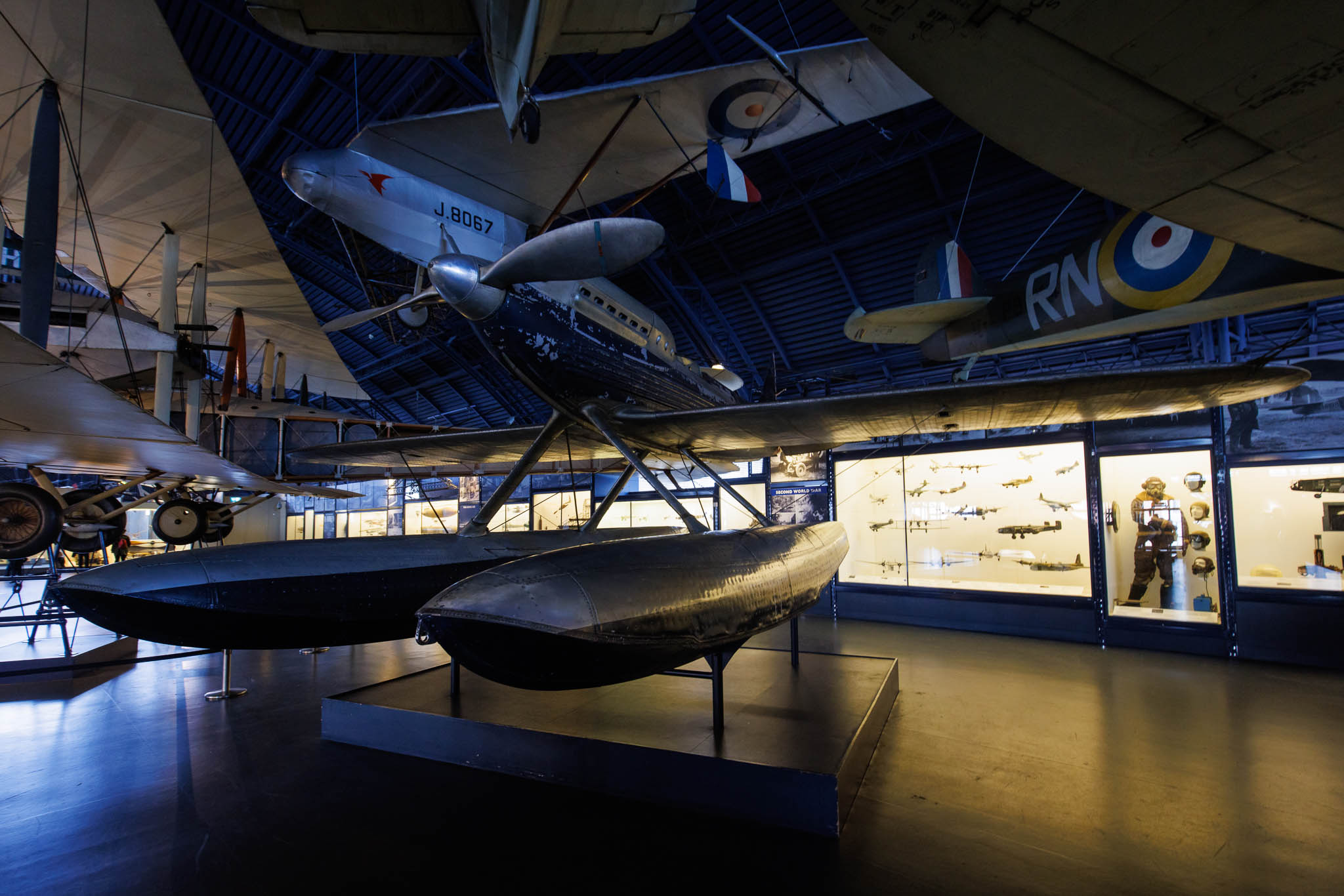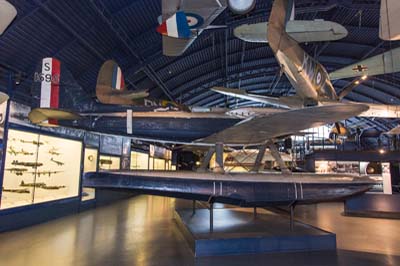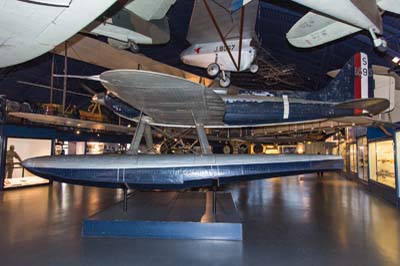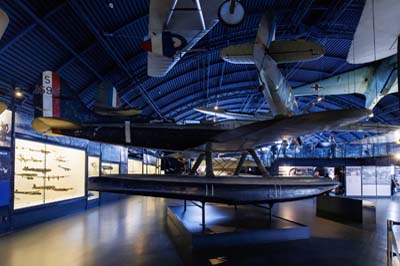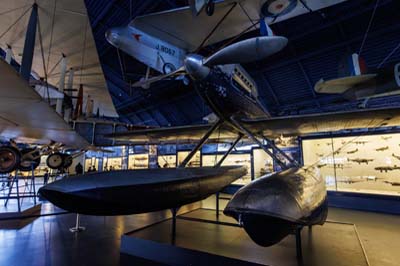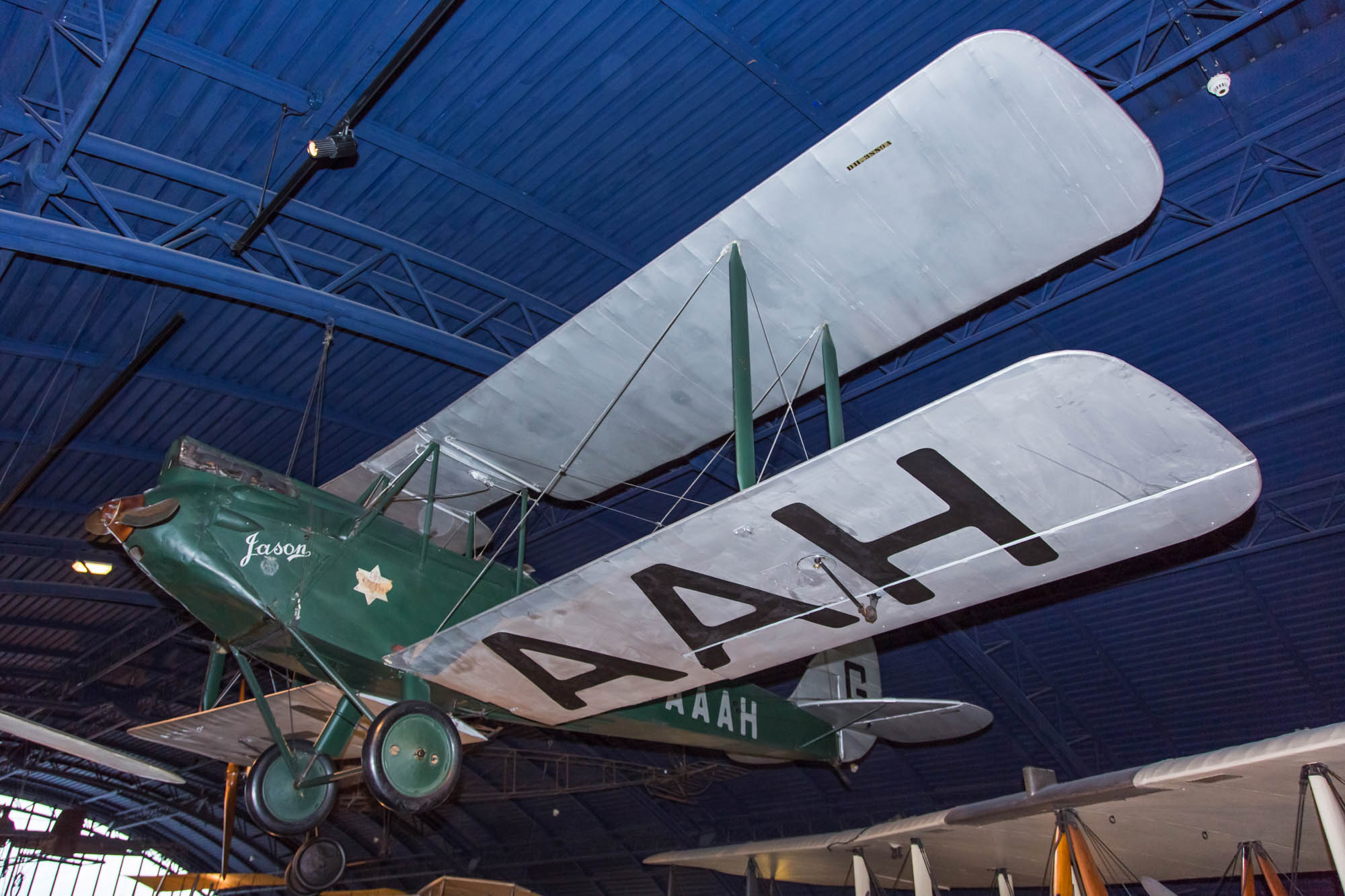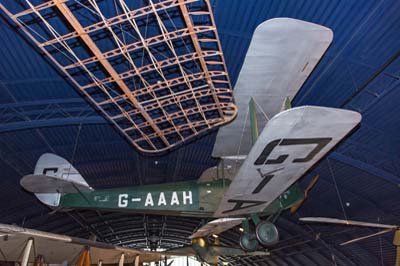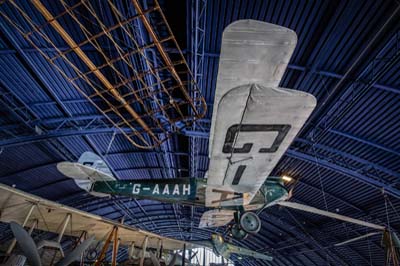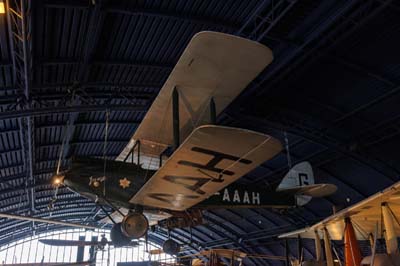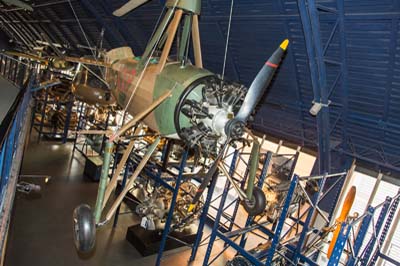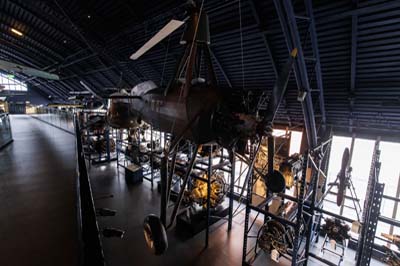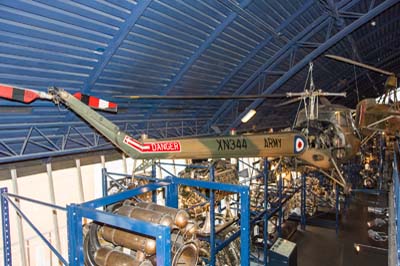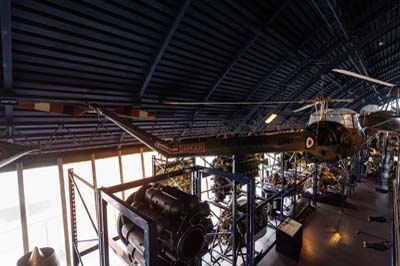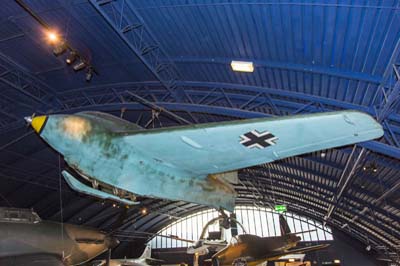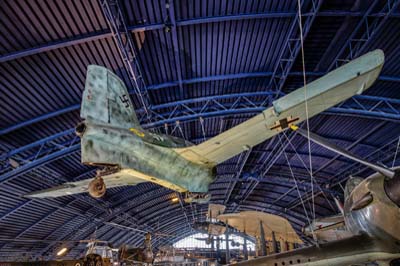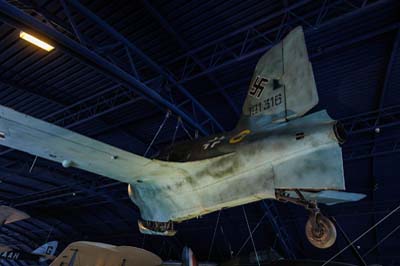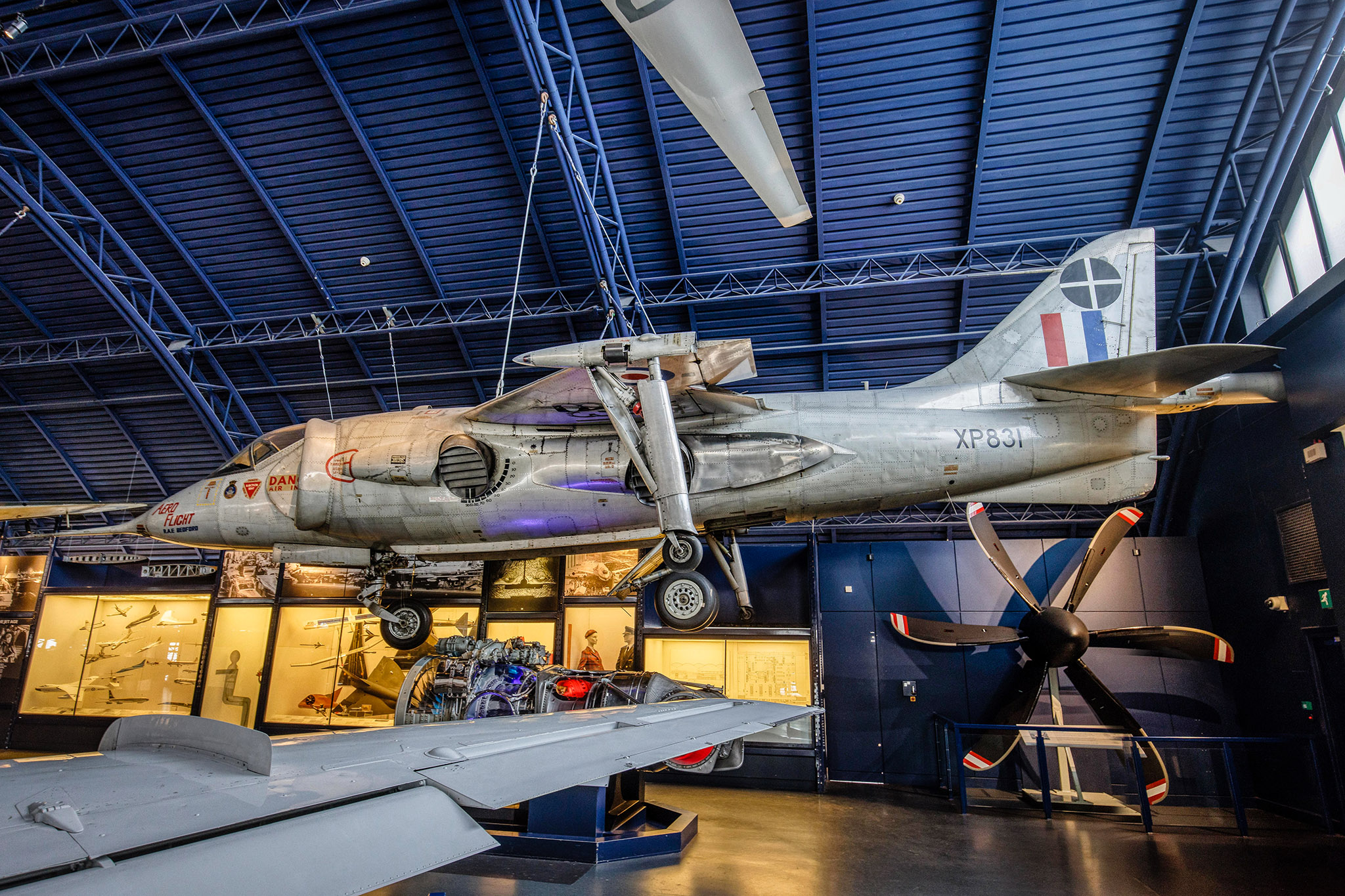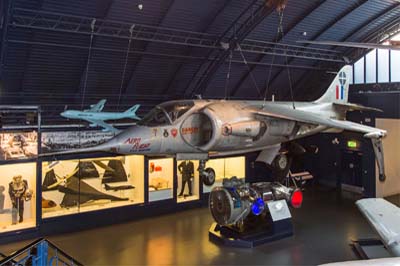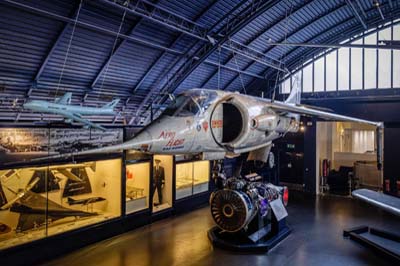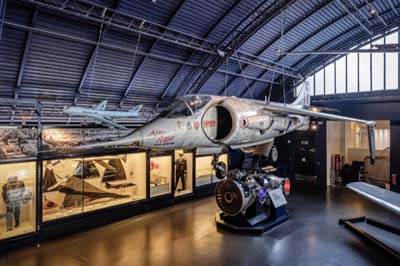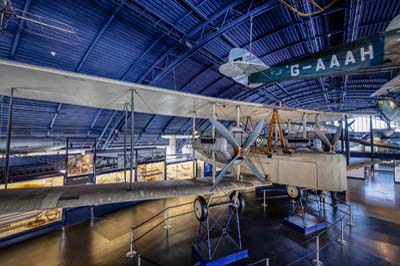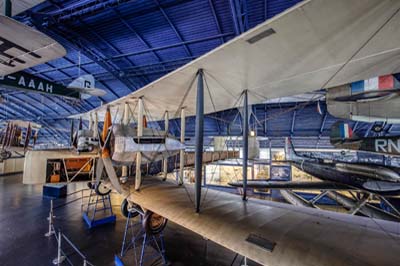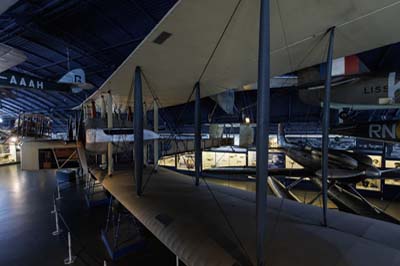Science Museum
South Kensington, London
2013 and 2023
|
The Science Museum was founded in 1857 it has a wide range of science and technology exhibits and features an aeronautical 'Flight' gallery.
My visits ten years apart did not change my view of how hard it is to get great images of the aircraft. It's dark, cluttered and soon very crowded with a harsh mixture of natural and unnatural light. They do not allow tripods to be used. Having said that I approached two duty managers who escalated my request to use a tripod and an hour later I was actually given permission to use it. I should have emailed in advance of course. |
| Left to right: 1941 Gloster-Whittle E.28/39 (W4041/G) Britain's first jet aircraft test pilot Gerry Sayer flew it for the first time on May 15, 1941, using the jet engine developed by Frank Whittle. The testing lead to the development of the first British jet fighter the Gloster Meteor which entered service in July 1944. |
| Royal Aircraft Factory SE.5A Scout (G-EBIB) |
Left to right: Royal Aircraft Factory SE.5A Scout (G-EBIB). The Royal Aircraft Factory SE.5A was in production between 1917 and 1920 as a single seat fighter. It had a top speed of 120 mph (193 km/h). The aircraft on display was built by Wolesey Motors of Birmingham in 1918 and is one of 33 SE.5A aircraft used by Major John Clifford `Jack' Savage in his Savage Skywriting Co Ltd based at Hendon from 1922 until 1934. G-EBIB is one of three survivors of the Savage fleet, the other two are; (F938 / G-EBIC later 9208M) is at Hendon Museum and Shuttleworth Trust has (F904 registered G-EBIA).
Avro 504K (D7560). The Avro 504K was a primary two-seat trainer and first appeared in 1913 and was in service with the Royal Flying Corps during World War One. In November 1914, three 504s carried out a bombing raid on German airship construction sheds at Friedrichshafen later in 1915 it was adapted for training duties and remained in service until the late 1920s. |
| Left to right: 1940 Hawker Hurricane Mk.I (L1592 'KW-Z'). It was designed in 1934 and entered service in 1937 as the fastest fighter in service by 100 mph. By 1939 500 were in service with eventually 32 squadrons being equipped with them. Hurricanes shot down more enemy aircraft during the Battle of Britain than all the other air and ground defences combined. They later were used in North Africa and in the Far East against Japan. The aircraft on display was fought over Dunkirk and in the Battle of Britain this early example retains fabric covering on the wings. |
| Left to right: Supermarine Spitfire F Mk.Ia (P9444 'RN-D') in 72 Squadron markings. The first Spitfire Mk.1s entered service in August 1938 and by the outbreak of war nine squadrons were equipped with them. The Spitfire was the only aircraft that could match the German Messerschmitt Bf 109E in aerial combat during the Battle of Britain. |
| Left to right: Supermarine S.6B (S1595). Reginald J. Mitchell designed several world-beating seaplanes and the Supermarine Spitfire. This aircraft won the 1931 Schneider Trophy and two weeks later it achieved the world speed record of 407.5 mph. |
| de Havilland DH60G Gipsy Moth (G-AAAH). |
| Left to right: 1928 de Havilland DH60G Gipsy Moth (G-AAAH) 'Jason I', Amy Johnson become the first woman to fly solo from Great Britain to Australia when she flew this aircraft in 1930. |
Left to right: Cierva C.30A (AP507 'KX-P'). In 1934 Juan de la Cierva, a Spaniard, developed the C.30A autogyro. This unique aircraft was eventually license built by A V Roe and Co as the Rota 1 for the civil and military market, subsequently building 66 examples. Twelve Avro built Rota 1 autogyros were supplied to the RAF in the mid 1930s, serving with the School of Army Co-operation at Old Sarum. They were used by 1448 (Rota) Flight at Duxford, (later reformed at Halton as 529 Squadron), in great secrecy to calibrate Britain's coastal radar stations during the war. The example on display was built as G-ACWP in 1937 and later impressed into RAF service in 1940 as AP507 until 1945, it is painted in 529 Squadron colours.
Saunders-Roe (SARO) Skeeter AOP.12 (XN344). Designed by Cieva from 1948 development continued by Saunders Roe from 1951, when they were taken over. The Skeeter was the first helicopter to operate with the British Army Air Corp (AAC). Eventually 64 AOP.12 variants were produced for the AAC and delivered from 1958 to replace the Auster in servce. It was later replaced by the Sioux and Scout from 1967. |
| Left to right: 1941 Messerschmitt Me 163B-1a Komet (191316 'Yellow 6' later possibly AM210) The only rocket propelled aircraft to enter service. Flying the very fast but volatile Me 163, Luftwaffe pilots of Jagdgeschwader (Jg) 400 managed to shoot down nine allied aircraft from August 1944. It is one of the 21 aircraft that were captured by the British at Husam and assigned the Air Ministry serial numbers AM200 to AM220. |
| Left to right: Hawker P.1127 (XP831) VSTOL Experimental Aircraft this is the first prototype which lead to the Kestrel and the Harrier (the world's first operational vertical take-off and landing (VTOL) jet fighter), it achieved vertical a take-off on October 21, 1960. |
| Left to right: Vickers F.B.27 Vimy (possibly F8608) a British heavy bomber designed during the latter stages of World War One. |
